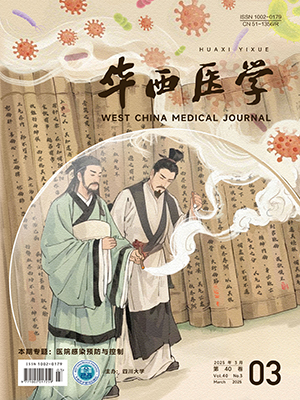| 1. |
Dheda K, Gumbo T, Gandhi NR, et al. Global control of tuberculosis: from extensively drug-resistant to untreatable tuberculosis. Lancet Respir Med, 2014, 2(4): 321-338.
|
| 2. |
Daley CL, Caminero JA. Management of multidrug-resistant tuberculosis. Semin Respir Crit Care Med, 2018, 39(3): 310-324.
|
| 3. |
Li Y, Sun F, Zhang W. Bedaquiline and delamanid in the treatment of multidrug-resistant tuberculosis: promising but challenging. Drug Dev Res, 2019, 80(1): 98-105.
|
| 4. |
中华医学会结核病学分会. 中国耐多药和利福平耐药结核病治疗专家共识(2019年版). 中华结核和呼吸杂志, 2019, 42(10): 733-749.
|
| 5. |
Van Deun A, Decroo T, Tahseen S, et al. WHO 2018 treatment guidelines for rifampicin-resistant tuberculosis: uncertainty, potential risks and the way forward. Int J Antimicrob Agents, 2020, 55(1): 105882.
|
| 6. |
张丽帆, 边赛男, 刘晓清, 等. 利奈唑胺治疗广泛耐药结核研究进展. 中华实验和临床感染病杂志(电子版), 2016, 10(6): 649-653.
|
| 7. |
World Health Organization. Global tuberculosis report 2019. Geneva: World Health Organization, 2019. (2019-10-15)[2020-06-01].https://www.who.int/publications-detail-redirect/9789241565714.
|
| 8. |
闫丽萍, 吴哲渊, 张祖荣, 等. 初治耐多药肺结核患者采用初治标准方案治疗的前瞻性临床研究. 中国防痨杂志, 2017, 39(1): 33-38.
|
| 9. |
Field SK. Bedaquiline for the treatment of multidrug-resistant tuberculosis: great promise or disappointment?. Ther Adv Chronic Dis, 2015, 6(4): 170-184.
|
| 10. |
唐神结, 许绍发, 李亮. 耐药结核病学. 北京: 人民卫生出版社, 2014: 126-287.
|
| 11. |
杨松, 严晓峰. 贝达喹啉治疗耐多药与广泛耐药结核病的现状和展望. 结核病与肺部健康杂志, 2019, 8(4): 249-252.
|
| 12. |
Diacon AH, Pym A, Grobusch MP, et al. Multidrug-resistant tuberculosis and culture conversion with bedaquiline. N Engl J Med, 2014, 371(8): 723-732.
|
| 13. |
Diacon AH, Pym A, Grobusch M, et al. The diarylquinoline TMC207 for multidrug-resistant tuberculosis. N Engl J Med, 2009, 360(23): 2397-2405.
|
| 14. |
中华医学会结核病学分会, 抗结核新药贝达喹啉临床应用专家共识编写组. 抗结核新药贝达喹啉临床应用专家共识. 中华结核和呼吸杂志, 2018, 41(6): 461-466.
|
| 15. |
Olaru ID, Heyckendorf J, Andres S, et al. Bedaquiline-based treatment regimen for multidrug-resistant tuberculosis. Eur Respir J, 2017, 49(5): 1700742.
|
| 16. |
中国防痨协会. 耐药结核病化学治疗指南(2019年简版). 中国防痨杂志, 2019, 41(10): 1025-1073.
|
| 17. |
Mbuagbaw L, Guglielmetti L, Hewison C, et al. Outcomes of bedaquiline treatment in patients with multidrug-resistant tuberculosis. Emerg Infect Dis, 2019, 25(5): 936-943.
|
| 18. |
Cohen K, Maartens G. A safety evaluation of bedaquiline for the treatment of multi-drug resistant tuberculosis. Expert Opin Drug Saf, 2019, 18(10): 875-882.
|
| 19. |
Guglielmetti L, Le DD, Veziris N, et al. Is bedaquiline as effective as fluoroquinolones in the treatment of multidrug-resistant tuberculosis?. Eur Respir J, 2016, 48(2): 582-585.
|
| 20. |
Andries K, Villellas C, Coeck N, et al. Acquired resistance of Mycobacterium tuberculosis to bedaquiline. PLoS One, 2014, 9(7): e102135.
|




